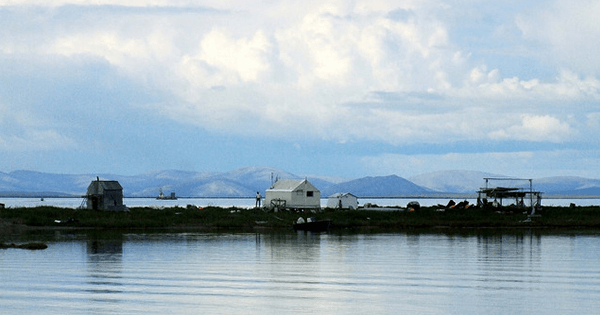
We’re getting ready to head to fish camp—our friend’s commercial salmon fishing operation on a remote stretch of beach about 60 miles as the float plane flies from Homer. For a few years, working and living at a fish camp has been something my husband and I have wanted to do with our four- and six-year-old daughters. Even in our small Alaska town, we crave getting away from it all—the smartphones, emails, and complicated calendars. And we want an opportunity to do meaningful work with our kids.
For two weeks, we’ll stay in a cabin on a seven-mile-long island on the west side of Cook Inlet, the 200-mile-long yaw of sea in Southcentral Alaska at the back of which sits Anchorage. Electricity—when we need it—will come from a generator; running water will come from a nearby stream. We’ll help pick nets (anchoring a gillnet and picking the fish that are caught) and paint the outside of the cabin. We’ll cook up camp dinners, and we’ll explore.
People have been heading to fish camp here for thousands of years. Native people migrated in pursuit of their food—sea otters, berries, caribou, or salmon, depending on the season and what part of this country they lived in. I love the thought that we’re following in the tradition of people who came before us, albeit with jarred mayonnaise, hip waders, and granola bars, and traveling by de Havilland Otter.
Fish camp is a central part of the lives of many Alaskans today—Native and non-Native. Some set up temporary camps to process the fish they’ll eat the rest of the year. Others, like Paula and Jon, run commercial operations, while setting aside seafood for their home use, as well. Our friends spend most of the summer at camp, and then will come back to town, where Jon teaches at my daughter’s school. They work a dozen nets staked across the beach at low tide. The incoming tide floods the nets and—everyone hopes—brings beautiful, bright red salmon. They pick the nets by skiff. A tender boat comes twice a week to buy the fish and deliver ice and supplies.
Paula and Jon have raised their children—13 and 15 years old—on the island. The kids are an essential part of the operation; both have been running skiffs since they were 11. I don’t delude myself that we’ll be very useful at fish camp with our young daughters and our inability to fix outboards. But we’re ready to work hard and learn.
Paula and Jon met at fish camp on Chisik Island. Paula has been fishing out there since she was a kid. Jon was working on the crew of a neighboring operation. Theirs is the second marriage I know about in Homer that began as a romance over gill nets strung across Chisik’s rocky beaches. I sense already that something magical happens out there. At the very least, we hope to come back with fish—filets from seal-bitten salmon, the ones the tender won’t buy.

